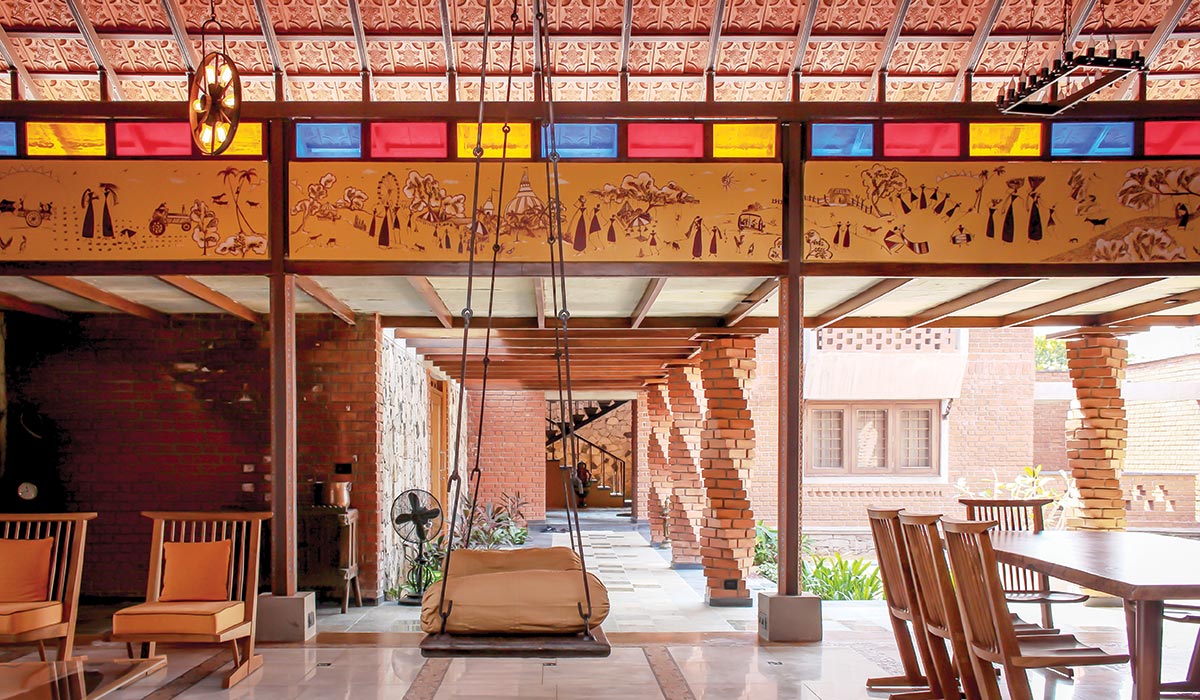
In today’s world, due to easy access to information, we learn of developments across the globe instantaneously. Most of the modern development in the cities look very similar, whether it is Singapore, Shanghai or New York. We can see Indian architecture heading in the same direction. Our urban areas are blindly following the Western language of office-building: first creating glass box, then closing it with curtains and blinds to avoid glare on the monitors, then switching on all the lights and pumping more energy for the so called 5-star rating AC to reduce heat gain through the glass. This is a criminal waste of resources. We need to look at it from the local/regional perspective, responding to our climate, the technology available, the context and culture. On a larger scale, what we generally see are glass buildings that are cropping up with no relevance to the context and surroundings they are built in.
Japan and Sri Lanka are two prime examples of countries that have their distinct style of work. The Japanese sensitivity to minimalistic, austere architecture, use of Tatami mats and Zen gardens reflect their philosophy. As for Sri Lankan architecture, it is a true response to their warm and humid tropical climate. When every city is unique in its own way, it should evolve in a way which preserves that uniqueness. Our role model cannot be Shanghai or Hong Kong, else every city in the world would begin to look the same!
We use steel, glass, concrete etc, since they are being used worldwide, or because the manufacturers want us to do so.
Very first, most of us have not understood the architecture of India, as we call it: neither from our traditional architecture, nor in terms of its construction processes. The materials we use today such as concrete, steel and glass, are the ones we see and are the most familiar with. However, a majority of India has been built using natural materials such as mud, brick, wood, stone, bamboo, and lime. Most of us do not know that these materials have been used in India since our textbooks do not cover these aspects. Hence, we use steel, glass, concrete etc., since they are being used worldwide or because the manufacturers want us to do so.
I am not against any advanced building materials factually, but we need to register the social, political, economical and cultural context of India, and offer solutions that are sensitive to its particularities. We need to understand the gap between technology and economical condition. There is little sense in spending millions on the best technology if very few Indians can associate with them and even fewer can afford.

Indian architecture is facing the dilemma of non-contextual architecture, lack of integrated urban planning, finding suitable definitions for sustainable and green architecture, and commercialization of the profession.
Indian architecture and design have been grappling with several issues - finding an identity, finding solutions to the dearth of land to house the increasing population, combating concerns related to global warming, and syncing with technological advancements. Retaining our tradition by shunning the trap of copying Western buildings, and overcoming the problems of depleting resources, shortage of manpower and poor infrastructure as some of our present challenges.
Indian architecture is also facing the dilemma of non-contextual architecture. It is burdened by the lack of integrated urban planning and by the propensity to use glass and steel facades. It is in the process of finding suitable definitions for sustainable and green architecture. The fast pace of commercialization of the profession, which has been eroding its purity, issue with construction, a need to create developments which focus on functions and durability and don’t end up looking the same, are other important factors to be considered in Indian architecture today.
Other aspects that need consideration are education, and licensing and laws related to the profession. There must be an emphasis on quality education, which may be achieved by setting basic standards and evaluation parameters for it.















